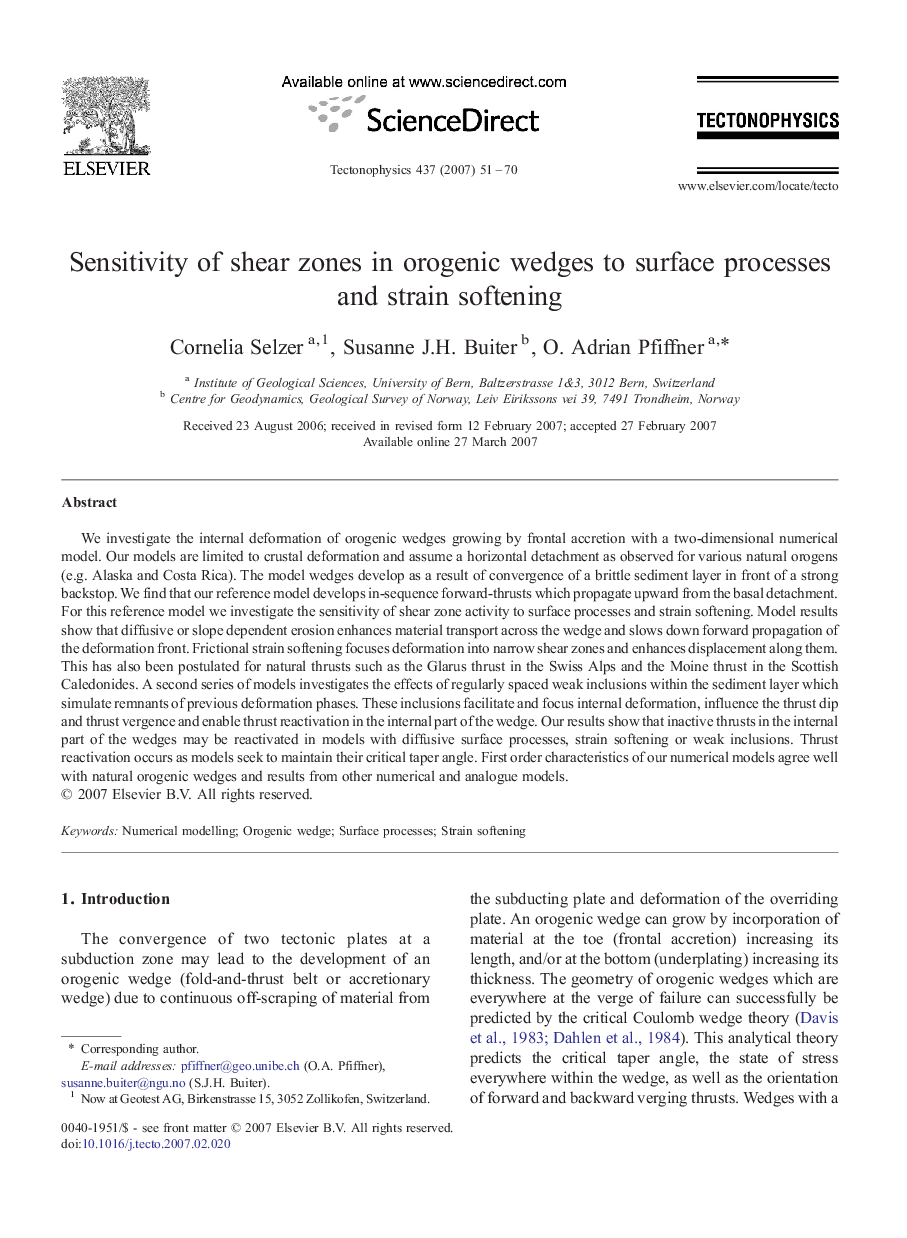| Article ID | Journal | Published Year | Pages | File Type |
|---|---|---|---|---|
| 4694803 | Tectonophysics | 2007 | 20 Pages |
We investigate the internal deformation of orogenic wedges growing by frontal accretion with a two-dimensional numerical model. Our models are limited to crustal deformation and assume a horizontal detachment as observed for various natural orogens (e.g. Alaska and Costa Rica). The model wedges develop as a result of convergence of a brittle sediment layer in front of a strong backstop. We find that our reference model develops in-sequence forward-thrusts which propagate upward from the basal detachment. For this reference model we investigate the sensitivity of shear zone activity to surface processes and strain softening. Model results show that diffusive or slope dependent erosion enhances material transport across the wedge and slows down forward propagation of the deformation front. Frictional strain softening focuses deformation into narrow shear zones and enhances displacement along them. This has also been postulated for natural thrusts such as the Glarus thrust in the Swiss Alps and the Moine thrust in the Scottish Caledonides. A second series of models investigates the effects of regularly spaced weak inclusions within the sediment layer which simulate remnants of previous deformation phases. These inclusions facilitate and focus internal deformation, influence the thrust dip and thrust vergence and enable thrust reactivation in the internal part of the wedge. Our results show that inactive thrusts in the internal part of the wedges may be reactivated in models with diffusive surface processes, strain softening or weak inclusions. Thrust reactivation occurs as models seek to maintain their critical taper angle. First order characteristics of our numerical models agree well with natural orogenic wedges and results from other numerical and analogue models.
